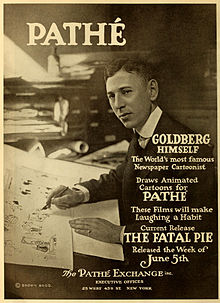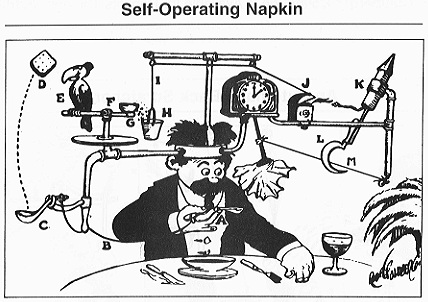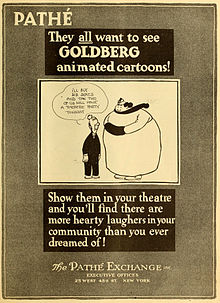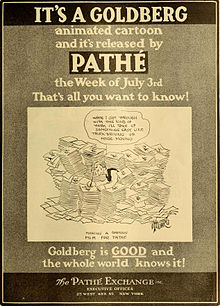EXCEPTIONAL ARTISTIC MALE ARTISTS PAINTERS SUBJECT MATTER!
PLEASE SEE MY ADDITIONAL LISTINGS FOR MORE EXCEPTIONAL PHOTOGRAPHS.
PLEASE READ THE FOLLOWING CAREFULLY!
ALL NON-USA RESIDENTS: SHIPPING IS $18.00 BY STANDARD INTERNATIONAL MAIL FOR FLAT ENVELOPES ONLY. PACKAGE POSTAL FEES ARE DETERMINED BY THE PACKAGE'S SIZE AND WEIGHT. PLEASE KNOW A CUSTOMS DECLARATION IS REQUIRED ON ALL INTERNATIONAL PACKAGES. INSURED PACKAGES MUST BE SENT PARCEL POST AND THE FEE IS $50.00 PLUS THE INSURANCE FEE. WINNING BIDDERS ACCEPT ALL SHIPPING RISKS FOR UNINSURED INTERNATIONAL PACKAGES. WINNING BIDDERS WILL RECEIVE AN EBAY INVOICE OR PERSONAL EMAIL FROM ME AFTER THE AUCTION CLOSES REGARDING PAYMENT AND SHIPPING DETAILS. PLEASE NOTE THAT I AM OBLIGATED UNDER U. S. LAW TO DECLARE THE FULL VALUE OF A PACKAGE SHIPPED OUT OF THE UNITED STATES. PLEASE DO NOT ASK ME TO BREAK THE LAW AND DO OTHERWISE.
ALL USA RESIDENTS: PAYMENT MUST BE MADE WITHIN THREE DAYS BY PAYPAL. ANY OTHER ARRANGEMENTS MUST BE MADE WITH ME WELL IN ADVANCE! NO EXCEPTIONS! CONNECTICUT RESIDENTS ARE SUBJECT TO 6.35% SALES TAX. UNLESS OTHERWISE STATED SHIPPING IS $ 8.00 IN THE UNITED STATES BY PRIORITY MAIL WITH DELIVERY CONFIRMATION. I CAN COMBINE SHIPPING ON MULTIPLE PURCHASES CLOSING THE SAME WEEK.
FOR COMBINED SHIPPING, YOU MUST WAIT FOR MY INVOICE!!!
Rube Goldberg
| Rube Goldberg | |
|---|---|
 In 1916 | |
| Born | Reuben Garrett Lucius Goldberg July 4, 1883 San Francisco, California, United States |
| Died | December 7, 1970 (aged 87) New York City, U.S. |
| Resting place | Mount Pleasant Cemetery in Hawthorne, New York |
| Occupation | Engineer, sculptor, news reporter, cartoonist |
| Known for | Rube Goldberg machines |
Reuben Garrett Lucius "Rube" Goldberg (July 4, 1883 – December 7, 1970) was an American cartoonist, sculptor, author, engineer, and inventor.
Goldberg is best known for a series of popular cartoons depicting complicated gadgets that perform simple tasks in indirect, convoluted ways, giving rise to the term Rube Goldberg machines for any similar gadget or process. Goldberg received many honors in his lifetime, including a Pulitzer Prize for his political cartooning in 1948 and the Banshees' Silver Lady Award in 1959.[1]
Goldberg was a founding member and the first president of the National Cartoonists Society,[2] and he is the namesake of the Reuben Award, which the organization awards to the Cartoonist of the Year. He is the inspiration for various international competitions, known as Rube Goldberg Machine Contests, which challenge participants to make a complicated machine to perform a simple task.
Contents
[hide]Personal life[edit]
Goldberg was born July 4, 1883, in San Francisco, California, to Jewish parents Max and Hannah (Cohen) Goldberg.[3] He was the third of seven children, three of whom died as children (older brother Garrett, younger brother Walter, and younger sister Lillian also survived).[4]
Goldberg began tracing illustrations when he was four years old, and first took professional drawing lessons when he was eleven.[4]
Goldberg married Irma Seeman on October 17, 1916.[3] They lived at 98 Central Park West in New York City and had two sons named Thomas and George.
During World War II Goldberg's sons changed their surname, at Goldberg's insistence, because of the amount of hatred towards him stemming from the political nature of his cartoons.[5] Thomas chose the surname of George for his brother, and George, wanting to keep a sense of family cohesiveness, adopted the same surname. Thomas and George's children now run a company called RGI (Rube Goldberg Incorporated) to maintain the Goldberg name. John George (Thomas's son) is assisted by his cousin Jennifer George[6][7] (George's daughter) and John's son Joshua George to keep the family name alive.[8]
Career[edit]
Goldberg's father was a San Francisco police and fire commissioner, who encouraged the young Reuben to pursue a career in engineering. Rube graduated from the University of California, Berkeley in 1904 with a degree in Engineering[1] and was hired by the city of San Francisco as an engineer for the Water and Sewers Department. After six months he resigned his position with the city to join the San Francisco Chronicle where he became a sports cartoonist.[1] The following year, he took a job with the San Francisco Bulletin, where he remained until he moved to New York City in 1907, finding employment as a cartoonist with the New York Evening Mail.[4]
The New York Evening Mail was syndicated to the first newspaper syndicate, the McClure Newspaper Syndicate, giving Goldberg's cartoons a wider distribution, and by 1915 he was earning $25,000 per year and being billed by the paper as America's most popular cartoonist.[4] Arthur Brisbane had offered Goldberg $2,600 per year in 1911 in an unsuccessful attempt to get him to move to William Randolph Hearst's newspaper chain, and in 1915 raised the offer to $50,000 per year. Rather than lose Goldberg to Hearst, the New York Evening Mail matched the salary offer and formed the Evening Mail Syndicate to syndicate Goldberg's cartoons nationally.[4]
Goldberg was syndicated by the McNaught Syndicate from 1922 until 1934.
A prolific artist, Goldberg produced several cartoon series simultaneously, including Mike and Ike (They Look Alike), Boob McNutt, Foolish Questions,[9][10] What Are You Kicking About,[11] Telephonies,[12] Lala Palooza, The Weekly Meeting of the Tuesday Women's Club, and the uncharacteristically serious soap-opera strip, Doc Wright, which ran for 10 months beginning January 29, 1933.[13] The cartoons that brought him lasting fame involved a character named Professor Lucifer Gorgonzola Butts. In that series, Goldberg drew labeled schematics of the comical "inventions" that would later bear his name.
Cultural legacy[edit]
The popularity of Goldberg's cartoons was such that the term "Goldbergian" was in use in print by 1915,[14] and "Rube Goldberg" by 1928.[15] "Rube Goldberg" appeared in the Random House Dictionary of the English Language in 1966 meaning "having a fantastically complicated improvised appearance", or "deviously complex and impractical."[4]:118 The 1915 usage of "Goldbergian" was in reference to Goldberg's early comic strip Foolish Questions which he drew from 1909 to 1934, while later use of the terms "Goldbergian", "Rube Goldberg" and " Rube Goldberg machine" refer to the crazy inventions for which he is now best known from his strip The Inventions of Professor Lucifer Gorgonzola Butts, drawn from 1914 to 1964.[4]:305
The corresponding term in the UK was, and still is, "Heath Robinson", after the English illustrator with an equal devotion to odd machinery, also portraying sequential or chain reaction elements.
Goldberg's work was commemorated posthumously in 1995 with the inclusion of Rube Goldberg's Inventions, depicting his 1931 "Self-Operating Napkin" in the Comic Strip Classics series of U.S. postage stamps.[16]
Film and television[edit]
Rube Goldberg wrote a feature film featuring his machines and sculptures called Soup to Nuts, which was released in 1930 and starred Ted Healy and The Three Stooges.
In the 1962 John Wayne movie Hatari!, an invention to catch monkeys by character Pockets, played by Red Buttons, is described as a "Rube Goldberg."
In the late 1960s and early 70s, educational shows like Sesame Street, Vision On and The Electric Company routinely showed bits that involved Rube Goldberg devices, including the Rube Goldberg Alphabet Contraption, and the What Happens Next Machine.[17][18]
Various other films and cartoons have included highly complicated machines that perform simple tasks. Among these are Flåklypa Grand Prix, Looney Tunes, Tom and Jerry, Wallace and Gromit, Pee-wee's Big Adventure, The Way Things Go, Edward Scissorhands, Back to the Future, Honey, I Shrunk the Kids, The Goonies, Gremlins, the Saw film series, Chitty Chitty Bang Bang, The Cat from Outer Space, Malcolm, Hotel For Dogs, the Home Alone film series, Family Guy, American Dad!, and Waiting...
Also in the Final Destination film series the characters often die in Rube Goldberg-esque ways. In the film The Great Mouse Detective, the villain Ratigan attempts to kill the film's heroes, Basil of Baker Street and David Q. Dawson, with a Rube Goldberg style device. The classic video in this genre was done by the artist duo Peter Fischli & David Weiss in 1987 with their 30-minute video "Der Lauf der Dinge" or "The Way Things Go".
Honda produced a video in 2003 called "The Cog" using many of the same principles that Fischli and Weiss had done in 1987.
In 2005, the American alternative rock/indie band The Bravery released a video for their debut single, "An Honest Mistake," which features the band performing the song in the middle of a Rube Goldberg machine.
In 1999, an episode of The X-Files was titled "The Goldberg Variation". The episode intertwined characters FBI agents Mulder and Scully, a simple apartment super, Henry Weems (Willie Garson) and an ailing young boy, Ritchie Lupone (Shia LaBeouf) in a real-life Goldberg device.
The 2010 music video "This Too Shall Pass – RGM Version" by the rock band OK Go features a machine that, after four minutes of kinetic activity, shoots the band members in the face with paint. "RGM" presumably stands for Rube Goldberg Machine.[19]
2012 The CBS show Elementary features a machine in its opening sequence.
2014 The Web Series, "Deadbeat," on Hulu features an episode titled, "The Ghost in the Machine," which features the protagonist, Kevin, helping the ghost of Rube Goldberg complete a contraption that will bring his grandchildren together after making a collection of random items into a machine that ends up systematically injuring two of his grandchildren so they end up in the same hospital and finally meet.
Games[edit]
Both board games and video games have been inspired by Goldberg's creations, such as the 60's era board game Mouse Trap, the 1990s-era series of The Incredible Machine games, and Crazy Machines.[citation needed] The Humongous Entertainment game Freddi Fish 2: The Case of the Haunted Schoolhouse involves searching for the missing pieces to a Rube Goldberg machine to complete the game.
In 1909 Goldberg invented the "Foolish Questions" game based on his successful cartoon by the same name. The game was published in many versions from 1909 to 1934.[20]
Rube Works: The Official Rube Goldberg Invention Game, the first game authorized by The Heirs of Rube Goldberg, was published by Unity Games (the publishing arm of Unity Technologies) in November 2013.[21]




